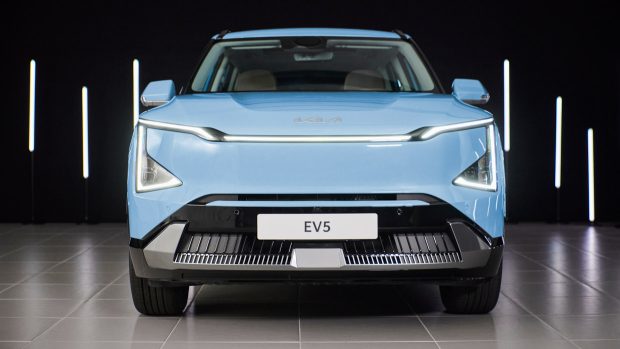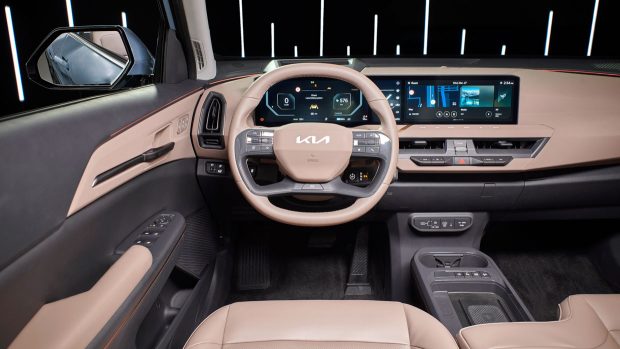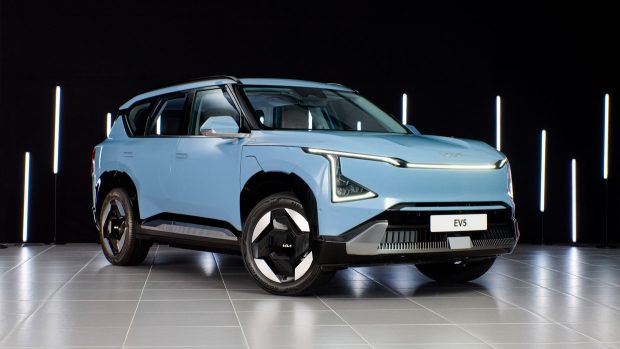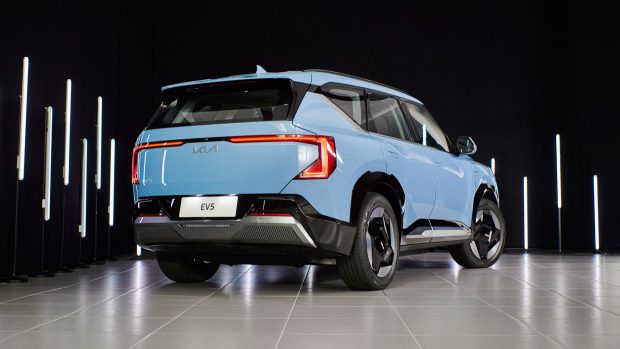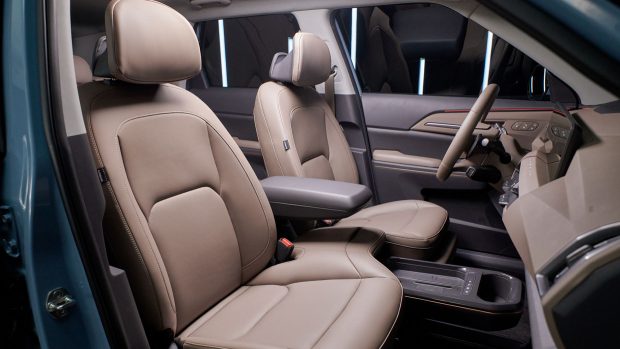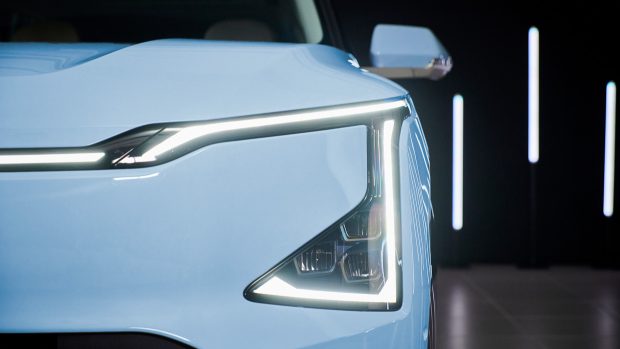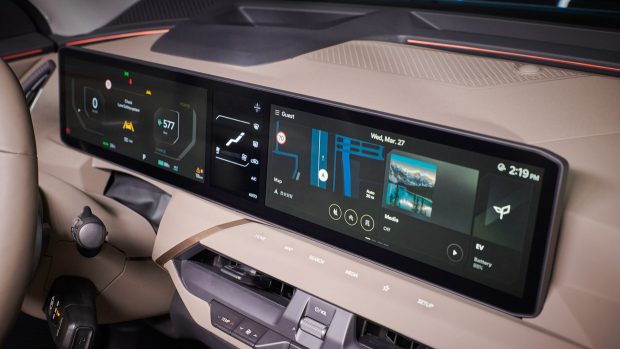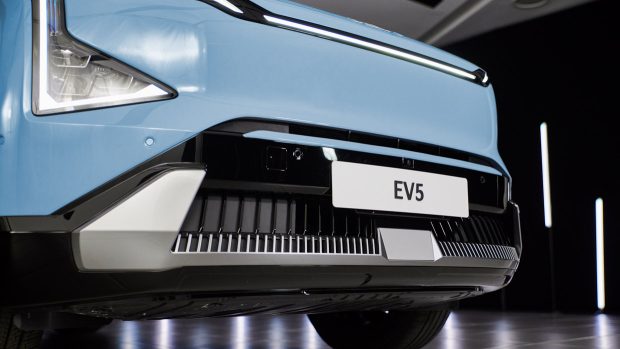-
Car Reviews
- Car News
-
Car Comparisons
Latest comparisons
- Chasing Deals
Look out Tesla and BYD – Korea is coming for you with its Chinese-built EV!
Kia’s EV5 electric midsize SUV is set to compete head on with the top-selling Tesla Model Y and undercut it on price when it launches in Australia this June.
Chasing Cars understands the new Chinese-built EV5 will be priced compellingly, with a sub-$60K entry price highly likely for its entry-grade variant, the front-driven Air. That’s around – or potentially below – the $65K mark on road.
That means that the new midsize electric SUV will undercut the Tesla Model Y, which currently begins at $65,400 before on road costs for its standard range rear-wheel drive base model.
*Update, 5 March 2024: since publication of this article, Tesla has announced a price drop for the Model Y which now kicks off at $63,900 before on-road costs for its entry-level model.
Its positioning in the Kia lineup is geared for value and volume sales – projected to be as much as 10,000 units annually – compared to the more expensive and supply constricted EV6 (from $72,990) and EV9 (from $92,020),
Speaking with Chasing Cars at a showcase of a pre-production Korean-spec EV5 in Sydney, General Manager of Product Planning Roland Rivero said: “We’re cognisant of the Model Y’s positioning and their strength in terms of sales, so the aim is to be competitive”.
While stopping short of confirming a sub-$60K starting price when pressed on the matter, Rivero articulated the importance of a compelling pricing proposition.
“[Kia Australia is] mindful of what we need to do and we’re mindful of potential legislation coming our way”, he said in reference to the New Vehicle Efficiency Standard.
“It’s definitely our aim and our objective to position this product for success. No matter what legislation does come our way, this is going to be a major contributor towards that.
“So we’re very serious when it comes to EV5. And it has the potential to be in that vicinity [below $60,000]”, Rivero said.
Certainly, pricing that undercuts the Model Y and falls below $60K would mean that Kia’s fourth electric vehicle will also undercut its current cheapest EV, the Niro ($66,590), as the brand continues to vie for a larger slice of the electric car market.
Success for the EV5 will need to be underpinned not just by a strong price proposition but also, importantly, healthy supply – an “important part” of choosing to source the vehicle from China, according to Mr Rivero.
“We’ve had lots of challenges over the last couple of years getting the amount of supply that our market demands and continuously depending on the Korean factories has been a challenge because they’re also supplying to Europe, North America, etcetera.
“So there is a benefit from a supply perspective to be able to get that mainstream volume sourcing out of the factory in China”.
Key to this decision – aside from eliminating competition with Europe for supply – is the fact that EV5 production in China has already begun, whereas production in Korea, which is where European models will be sourced from, only begins in 2025.
Sourcing Chinese production effectively unlocks an earlier release for Australia.
With Chinese production well underway, Kia Australia has been open about the fact it will be able to “secure supply of up to 850 per month, which is needed to target mainstream appeal”, according to Kia Australia’s Chief Executive Office, Damien Meredith.
That equates to a potential sales volume of around 10,000 per year for the EV5, which could see it become the brand’s fourth best-selling vehicle in Australia.
Last year, Kia had three other vehicles sell more than 10,000 units – its number one selling Sportage midsize SUV (15,747), the venerable Carnival people mover (11,312) and the Seltos small SUV (10,473).
In terms of electric vehicle sales, the Kia EV6 and EV9 sold comparatively fewer examples at 1831 and 208 units respectively, though the latter has not yet experienced a full year on sale.
Tesla, on the other hand, sold 28,769 Model Y midsize SUVs – equating to an average of about 2400 per month, and enough to make it Australia’s highest-selling EV and sixth-most popular vehicle overall.
While detailed pricing and specs for the Australian market haven’t yet been released, Kia has confirmed that both Air and Earth grades will be available at launch in June, with a top-spec GT-Line to arrive in the fourth quarter of the year.
Both standard- and long-range variants will be offered, along with front-wheel-drive (single motor) and all-wheel-drive (dual motor) powertrains, though application by grade hasn’t yet been confirmed.
The standard range will feature a 64kWh battery (estimated 60kWh usable), while the long range will feature an 88kWh battery (estimated 84kWh usable).
Chinese built vehicles – as detailed above – will feature lithium iron phosphate batteries, while Korean built EV5s will feature nickel manganese cobalt batteries.
The LFP batteries have the added advantages of being cheaper, slightly larger, and being able to be charged to 100 percent regularly, unlike the NMC batteries which are recommended to be charged to 80 percent.
However, and key to its cheaper price positioning, the front- and all-wheel drive EV5 differs from the rear- and all-wheel drive EV6 and EV9 not just in drivetrain configuration but also in its lower 400-volt electric architecture, compared to the 800-volt architecture of its pricier siblings.
While no doubt affording more attainable pricing, 400v architecture will mean slower charging speeds compared to an EV6. Chasing Cars expects an estimated maximum AC charging speed of 11kW and a maximum DC charging speed of about 125kW.
While official WLTP range figures have not yet been confirmed for Australia, Chasing Cars has previously estimated these as 466km for the Standard Range FWD, 633km for the Long Range FWD and 572km for the Long Range AWD.
Latest news
About Chasing cars
Chasing Cars reviews are 100% independent.
Because we are powered by Budget Direct Insurance, we don’t receive advertising or sales revenue from car manufacturers.
We’re truly independent – giving you Australia’s best car reviews.
